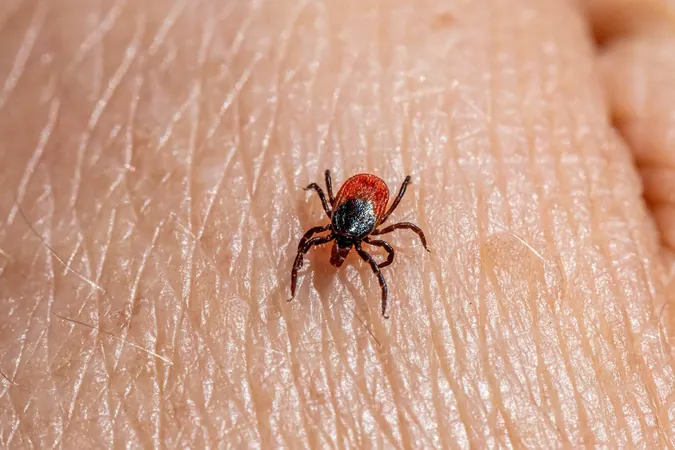
Unraveling Ticks' Secret Weapons Against Deadly Viruses: A Breakthrough in Disease Control
2025-06-17
Author: Daniel
A Game-Changing Discovery in Tick Research
Researchers from the Liverpool School of Tropical Medicine have made a sensational breakthrough in understanding how ticks defend themselves against the dangerous severe fever with thrombocytopenia syndrome virus (SFTSV). This virus, which is spreading through parts of East Asia, can wreak havoc on human health, leading to high fever, fatal internal bleeding, and currently, there is no approved treatment or vaccine available.
How Climate Change Elevates the Risk of Tick-Borne Diseases
As climate change expands the habitats of ticks, the threat from tick-borne illnesses is escalating. This research couldn’t be more timely, highlighting the urgent need for innovative strategies to disrupt this alarming trend.
Unlocking the Molecular Defense Mechanism of Ticks
Published in the prestigious journal Nature Communications, this study delivers a comprehensive look at the cellular responses of the tick species Rhipicephalus microplus when confronted with SFTSV. By employing advanced systems biology techniques, scientists mapped the intricate molecular interactions that occur after tick cells encounter the virus.
Proteins That Fight Back: Ticks as Natural Defenders
The research spotlighted two critical proteins, UPF1 and DHX9, which act as natural barriers against viral replication. Professor Alain Kohl, a leading virologist at LSTM, emphasized the significance of these findings, stating, "Ticks are crucial disease vectors, yet their complex biology in combating viruses harming humans remains poorly understood. This study reveals their sophisticated means of detecting and controlling viral threats."
Revolutionizing Our Approach to Disease Prevention
The implications of this discovery are significant—understanding how ticks manage to fend off viruses could pave the way for revolutionary strategies to interrupt the transmission chain to humans. Dr. Marine Petit, the lead researcher, noted, "Our findings show that tick cells aren’t mere passive carriers of SFTSV; they actively engage in viral defense. By repurposing existing proteins into molecular guardians, they play a pivotal role in their antiviral strategy."
A New Frontier in Tick-Borne Disease Research
With the support of the University of Liverpool's tick cell repository, the team identified nearly 400 previously unrecognized proteins and a multitude of RNA molecules in their exploration of the Rhipicephalus microplus BME6 cell line. This foundational research sets the stage for future investigations into the antiviral mechanisms of other disease-carrying ticks. The ultimate goal? To identify vulnerabilities in the virus-vector relationship that can be targeted to halt the spread of infectious diseases.


 Brasil (PT)
Brasil (PT)
 Canada (EN)
Canada (EN)
 Chile (ES)
Chile (ES)
 Česko (CS)
Česko (CS)
 대한민국 (KO)
대한민국 (KO)
 España (ES)
España (ES)
 France (FR)
France (FR)
 Hong Kong (EN)
Hong Kong (EN)
 Italia (IT)
Italia (IT)
 日本 (JA)
日本 (JA)
 Magyarország (HU)
Magyarország (HU)
 Norge (NO)
Norge (NO)
 Polska (PL)
Polska (PL)
 Schweiz (DE)
Schweiz (DE)
 Singapore (EN)
Singapore (EN)
 Sverige (SV)
Sverige (SV)
 Suomi (FI)
Suomi (FI)
 Türkiye (TR)
Türkiye (TR)
 الإمارات العربية المتحدة (AR)
الإمارات العربية المتحدة (AR)